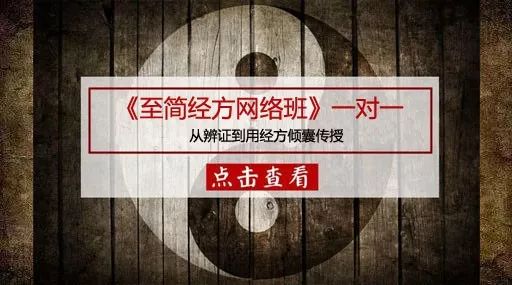
The pulse image consists of a mixture of pulse position, strength, rate, and other factors, forming 43 distinct pulse types. The pulse diagram illustrates the position, strength, shape, frequency, and complex structure of the pulse, making it easier for beginners in pulse diagnosis to recognize and master. The pulse strength of a normal person is assumed to be displayed as thin, sharp, hard, soft, weak, etc., represented by 3-7 pulse waves in the diagram. Each pulse type, such as floating, hard, sharp, wide, and so on, is represented by seven diagrams. During pulse diagnosis, three to seven indicators may appear. The width of a normal pulse is assumed to be calculated as three to seven, represented by three thick lines at the base of the pulse wave in the diagram. If the pulse is thin, it fills one to three boxes; if it is a large pulse, a flood pulse, a solid pulse, or a rapid pulse, it is filled with three to seven pulse wave diagrams to indicate that it is wider than the normal pulse. The peak of a normal pulse is assumed to be represented by seven diagrams, with each wave corresponding to 3-6 seconds (1/10 of a minute), which is the number of beats for a normal person.
1. Slow Pulse
(1) Pulse Image: A slow pulse is defined as three beats per breath, and any pulse slower than normal is considered a slow pulse. A slow pulse is three beats per breath, with a pulse rate of about 60 beats per minute. The “Pulse Classic” states: “A slow pulse has three beats per breath; if it deviates from the meridian, it is only two beats.” This means a slow pulse can be 54 beats per minute. If it is only 36 beats per minute, it is considered a pulse that deviates from the meridian.
(2) Characteristics of Slow Pulse:
A slow pulse arrives at three beats, with Yang unable to overcome Yin, leading to cold Qi and blood;
It merely separates the floating and sinking, and to eliminate Yin, one must enhance the source of fire.
(3) Classification of Slow Pulse:
(1) Slow and light but not moving—indicating a slow pulse due to cold
Slow pulse indicates cold
Organ diseases also include (2) Slow and sluggish with intermittent stops—indicating a knot pulse due to stagnation
Two to three beats can be inferred (3) Slow and rough with fixed periods—indicating a substitute pulse with many dead beats
Slow pulses can have various combinations
Four pulse theories (4) Slow and weak with poor flow—indicating a rough pulse with blood stagnation
(4) Diagram Explanation: A slow pulse is characterized by a decrease in the number of beats, with the peak depicting only 1-3 pulse waves, representing a pulse rate of around 50-60 beats per minute. The pulse body and strength vary according to the combination of pulses and symptoms.
(5) Main Diseases: A slow pulse indicates Yang deficiency (referring to heart and kidney Yang) and the inability of Qi to spread throughout the chest. Throughout history, physicians have classified slow pulses as belonging to the category of deficiency and cold. Clinical experience shows that slow pulses are often seen in cases of weak heart Yang, physical weakness, and low blood pressure. If the pulse is floating and combined with a slow pulse, it often indicates exterior cold; if it is not slow, it indicates interior cold. The ancient saying about Qi in the chest refers to the function of the heart and lungs; insufficient heart Yang is the main cause of a slow pulse. A slow pulse combined with a rough pulse indicates blood cold; a slow pulse combined with a string-like pulse often indicates stomach pain; a slow and thin pulse is commonly seen in cases of Qi and blood deficiency; a slow pulse combined with a solid pulse often indicates internal stagnation. Therefore, the appearance of a slow pulse is influenced by deficiency, excess, and cold, or by Qi and blood stagnation. For example, a Yangming dryness knot often presents with a slow pulse, but the pulse must be slow and strong, and the symptoms must manifest as heat. In cases of meningitis, due to increased intracranial pressure, although fever may occur, a slow pulse can sometimes be present. Therefore, during diagnosis, it is essential to have a comprehensive understanding and careful differentiation, and one must not hastily treat a slow pulse as a cold syndrome.
(6) Clinical Differentiation Analysis of Slow Pulse:
(1) Slow and light but combined with floating—indicating exterior cold
(2) Slow and sluggish but combined with sinking—indicating interior cold
Cold Syndrome (3) Slow and rough but combined with rough—indicating blood cold
Slow pulse (4) Slow and weak but combined with string-like—indicating stomach cold
(5) Slow and weak but fine—indicating Qi deficiency and blood loss
Heat Syndrome—slow pulse combined with solid indicates internal stagnation or accumulation of heat.
Table 1: Classification of Slow Pulse and Main Diseases
|
Location |
Left Cun |
Left Guan |
Left Chi |
Right Cun |
Right Guan |
Right Chi |
|
Main Disease |
Cold obstruction in the chest, fullness and pain, lack of energy |
Stiffness and pain in the limbs, fullness in the abdomen, irritability |
Kidney deficiency, diarrhea, low back pain, menstrual irregularities |
Chest tightness, shortness of breath, cough with phlegm |
Abdominal fullness, poor digestion, nausea |
Lower abdominal pain, urinary issues, menstrual irregularities |
This article is from: Wang Shuangxiang
Recommended related books:
(Reprint statement: This article is reprinted from the internet, and the copyright belongs to the original author. If there is any infringement, please contact us for deletion!)
Original article extended reading:
Six Meridians and Six Major Disease Locations—Three Yin Cold Evil Disease Locations! (Understanding the Last Article on Cold Damage)—> Click to read
Six Meridians and Six Major Disease Locations—-Shaoyang Meridian Organ Disease Locations! (A Small Chaihu Decoction Dominates)
—> Click to read
Six Meridians and Six Major Disease Locations—–Yangming Meridian Organ Disease Locations! (Treating Damp-Heat is Crucial)—> Click to read
Six Meridians and Six Major Disease Locations—Taiyang Meridian Organ Disease Locations! (This Article Understands the Taiyang Meridian)—> Click to read
Six Meridians and Six Layers of Vital Energy Repair Power! (Complete Explanation of Self-Healing Energy)—> Click to read
Comprehensive Explanation of Cervical Spondylosis! (Classical Treatment + Secret External Treatment)—> Click to read
Comprehensive Explanation of Toothache! (Cold Damage Thinking, Disease Mechanism Differentiation, Classical Formula Symbol)Comprehensive Explanation of Insomnia! (Disease Mechanism Differentiation + Core Ideas of Stabilizing Yang)Comprehensive Explanation of Fever! (Understanding the Mechanism of Disease and Differentiation, Internal and External Treatment Methods)—> Click to read
Comprehensive Explanation of Headache! (Understanding the Key Points of Differentiation)—> Click to read
For more exclusive TCM secrets, scan the QR code below to follow our public account:

TCM Internal Treatment Course:
“The Simplest Classical Formula Online Class” one-on-one, from differentiation to using classical formulas, imparting all knowledge!!! (Click to enter)
TCM External Treatment Course:
“Hands-On TCM” can treat diseases without any foundation!!! (One-on-one teaching) (Click to enter)
TCM Learning Mind Map Series:
“Embedding Six Meridians Differentiation”—-“Embedding Six Meridians Differentiation into Your Brain” electronic version mind map (Click to enter)
Self-learning TCM to Treat Yourself” self-help integrated mind map set (Click to enter)
Yin-Yang One Yuan Treatment Method (Returning Complex TCM to the One Yuan Path) (Click to enter)
Comprehensive Diagram of Circular Motion Differentiation (All over the body, Microcosmic Yin-Yang Ascending and Descending, Organ Positioning) Mind Map Version (Click to enter)
If this article helps you
Please scan to reward, as you wish




